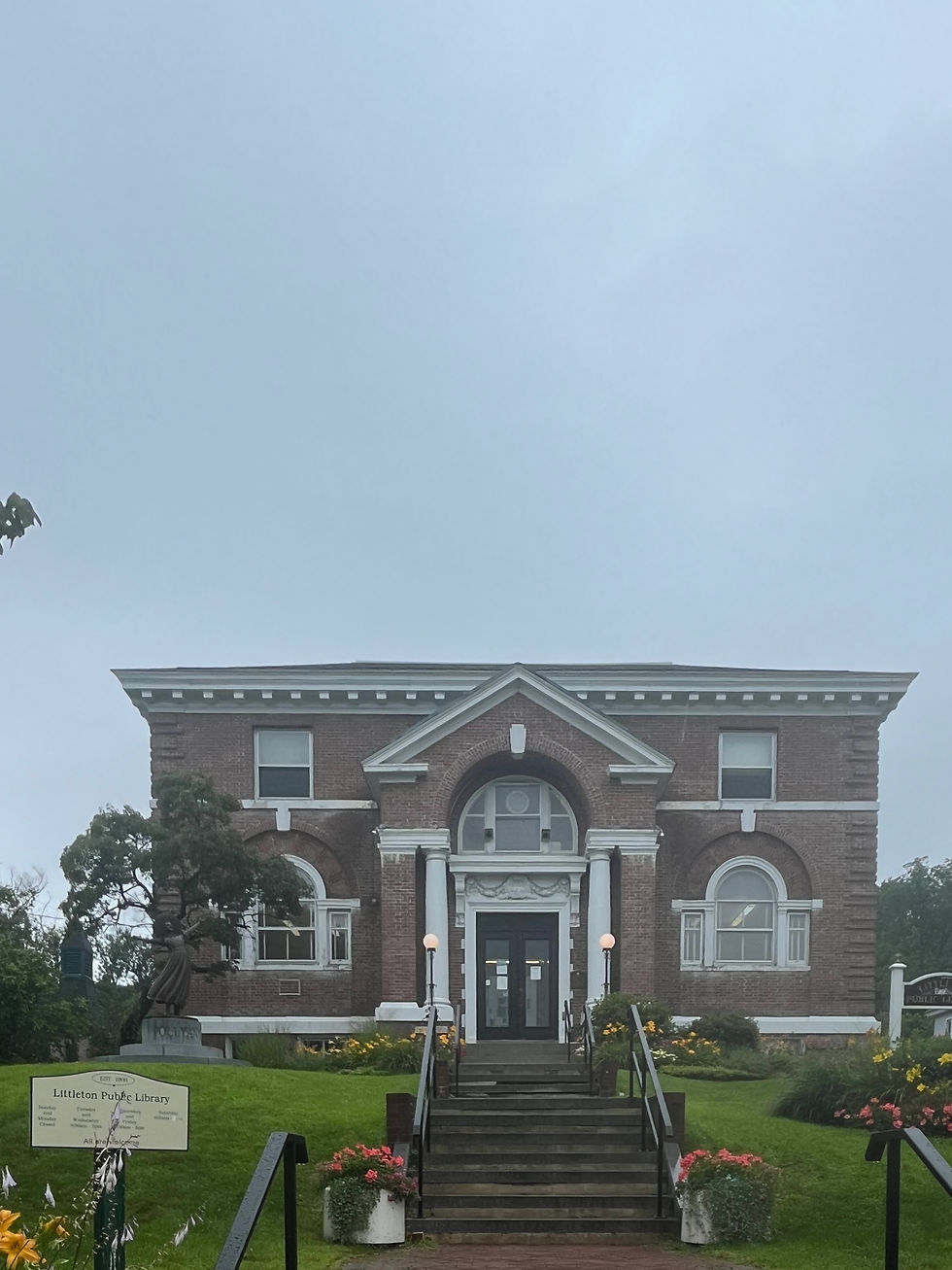The Libraries of Massachusetts: Provincetown to Medford
- Mark Carl Rom
- Jun 17
- 4 min read
Saturday, June 14, 2025

The surf was silent at dawn: no waves, no dog walkers, no runners, and only a few birds strolling in reverie. The clouds hung low, suggesting rain. I was groggy. Cumberland Farms, the New England convenience store chain, was the only place to get coffee at this hour. I skipped Pilgrims First Landing Park, accidentally, as I hadn’t seen it on my map. Next time. Rain sputtered all morning as I headed back home to Medford. Early Sunday mornings are my favorite time to drive as the roads, even along the normally busy Cape, were quiet.

The Brewster Ladies Library woke me up. As the story goes, in 1850 and 1851 Sarah Augusta May and Mary Louise Cobb, two young girls in the town, got the notion they needed a library, as they “lamented the scanty supply of books.” They got the girls in their history class together, consulted Pastor Frederick Newell of the First Parish Church, and founded what became the Brewster Ladies Library Association.
The Association’s website states that each of these girls gave two books to the nascent library. They also contributed $1 each, earned by one through selling pictures, another by doing needleworks, and another by blackening her brother’s boots ($1 seems a steep price for this, unless her brother got to her to do it often). They solicited contributions from the locals and, by the end of 1852 they had raised $100. They set up a bookcase in Captain Jeremiah Mayo’s home and bought books for it. Augusta served as the volunteer librarian on Saturdays.
The “Girls Library” opened to the public on January 19, 1853. Those who wanted to patronize it were charged a $1 membership fee. (The first book checked out was James Fenimore Cooper’s Wing and Wing, nautical fiction with themes of faith and religion.) Outgrowing Mayo’s home, Reverend Thomas Brown allowed the library to be moved in the front room of the parsonage. By 1868 enough money had been raised for Brewster to build its own library, and in 1879 the Brewster Ladies Library Association was formally incorporated. In the 1970s, some objected to the name as it could be interpreted to mean that the library was meant for ladies (only). At the annual meeting of the library, the vote was overwhelming to retain the name, although in 1999 the words “Your Community Library” were added to affirm that the library was open to all. Additions were added in 1977 and 1997, each retaining the style of horizontal maroon planks, vertical golden ones, and pink fish scale trim under the eaves. I simply must return when it is open.

Dennis is a seaside resort town on northern Cape Cod. The town encompasses five villages and five libraries: the Dennis Public Library, Jacob Sears Library, Dennis Memorial Library, West Dennis Library, and the South Dennis Free Library. Not bad for a town with fewer than 15,000 permanent residents. Jacob Sears is a one-story white frame building with turrets on each end, three dormers in the front, blooming hydrangeas along the entrance walk, and charm aplenty.

The Sturgis Library in Barnstable is in the oldest building housing a public library in the United States. Built in 1644, the front room was used for public worship, so it is also the oldest remaining building where religious services were regularly held. Set deep on the lot, many souls have trod the flagstone path to the front door. As I admire it, I question my decision to visit all these libraries on a day when they are closed.

Some libraries are like Schrodinger’s Cat, public and at the same time not public. They are free and open to the public, yet they are not supported by public funding. The Clift Rogers Free Library & Consignment Shop in Marshfield Hills and the James Library & Center for the Arts in Norwell are such cats.

Clift Rodgers, a leather merchant, had donated property and funds for a library, but it continually struggled for the funds to keep it in operation. It is now located in what once was a small store that had been bought by a church. In 1955 Mrs. Edward Reese opened a consignment store in the library, and that has been its main source of funding since then, while also providing “a warm and inviting place for friends to meet.” The green shuttered, white frame library is open to all weekday afternoons.

The James, the oldest library in Norwell, is named after its primary benefactor, Josiah L. James. Since 1874, it has been where groups such as the Young Ladies Union, the Norwell Garden Club, and the Norwell Women’s Club have held their meetings. In 1994, the upstairs was converted into a Victorian concert hall with the addition of a grand piano, and soon after that the basement was renovated to create a gallery for local artists. It is a non-profit supported by individual and corporate sponsors.
Tracy and Lauren, the librarians on duty, appeared delighted to see me when I strolled in just after the noon bells tolled. Tracy was the Assistant Director although, as she said, “I also fix the toilets.” They raved about artist Dina Brennan’s show “Color Noise” (Dina writes “Color is more than aesthetics. It is intrinsically linked to mood, emotion, physiology, wellbeing, creativity and/or productivity.”) which was closing that day, and they encouraged me to see it. I was alone in the gallery, admiring her acrylics, enjoying them with little thought to understanding them.







Comments